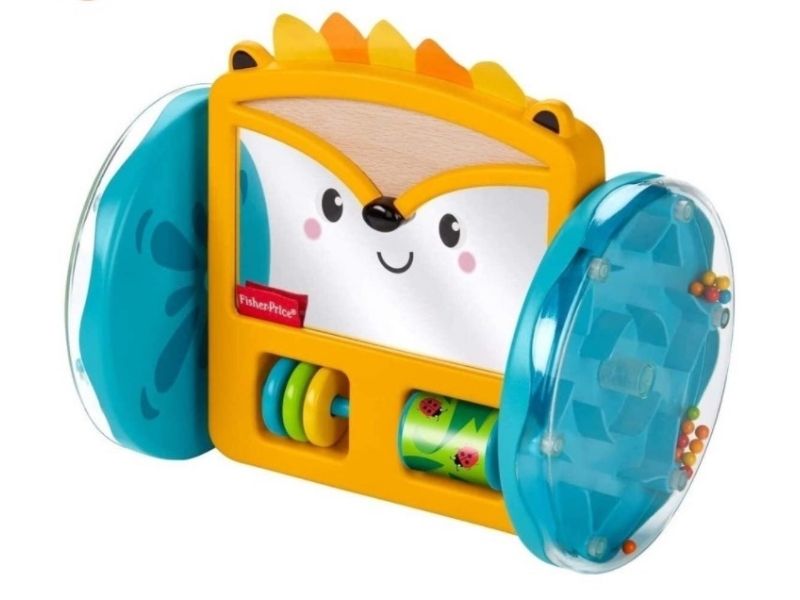Tummy time is one of the most fundamental exercises in your baby’s first developmental stage. However, not all newborns will be receptive to the activity, and some might even downright hate it. Tempting as it may be to stop the process when your child starts fussing, this is essential in building motor skills that lead to crawling. Here’s everything you need to know about tummy time for newborns to help you get started!
What Is Tummy Time & What Are The Benefits
Tummy time involves placing your newborn on their stomach while they’re awake. It helps to build their head, neck, and upper body strength till they can fully push themselves up and lift their heads. Besides improving motor skills, this also aids with their sensory development as they experience different body movements and positions. By feeling different textures underneath their hands and learning how to shift their weight, they gain a better understanding of their sense of touch and balance. With enough practice, they should be able to sit up, crawl, and eventually walk.
When To Get Started
You can begin tummy time with your newborn the moment you bring them home from the hospital. Remember to supervise them carefully during this process. If your child falls asleep during this exercise, gently roll them onto their backs.
Basic Tummy Time Exercises
Tummy-to-tummy/Tummy-to-chest

This position is great for bonding time between you and your little one. Place your baby on your chest or tummy as you lie flat down on the mattress bed (or propped on pillows) and hold firmly. As your baby is nestled comfortably, you can chat and engage with them, encouraging them to partake in tummy time more and more.
On Your Lap
You can also position your child face down across your lap, with a hand on their bottom to keep them calm and steady. Additionally, this might help to comfort your baby as they burp.
Carry Tummy Down (Football Hold)
Instead of carrying your baby with their backs, do the opposite and hold them with their stomachs down on your arms. Lie your baby over your forearm and make sure to support their head with the natural crease in your elbow. Then rest your other arm in between your child’s legs, with your hand placed underneath their tummy or shoulder for better support.
Eye-Level Smile

Place your little one on a play mat, stomach down, and then crouch down to meet their eye level. This shared experience and engagement through eye contact can encourage your newborn to participate in tummy time exercises for a longer period.
Tummy Minute
Let your little one start out with two to three times a day, each session lasting for about three to five minutes. Then slowly increase it to 10 to 15 minutes daily. Once they get stronger and begin to enjoy these exercises, you can gradually work their work up to an hour by the time they turn three months old.
What To Do If Your Baby Hates Tummy Time
Try Shorter Intervals

If your newborn is resisting tummy time, you can try giving them shorter intervals a day. So rather than starting with three to five minutes, begin with one to two minutes instead. With time, they’ll be able to enjoy longer belly sessions, but don’t force it too much.
Use Toys To Encourage

Give your baby an incentive to practice their exercises with their favourite toys. Lay them out in a circle around your child to encourage them to reach out and grab. Rattles and musical toys are some of the best options, as they’re visually stimulating and improve their sensory development skills. Meanwhile, brightly coloured stuffed toys are soft to the touch that your child will love to feel and play with.
Set An Unbreakable Mirror In Front Of Them

Unbreakable mirrors are another excellent prop to both improve visual tracking and motivate your child to push themselves up. Catching their reflection in the mirror will instantly pique and hold your little one’s interest, causing them to be more willing to lift their heads.
Change The Location
Just like how adults spruce up their home with indoor plants, your child might also appreciate a little change in scenery. Switching up locations might captivate their attention as they take in the view of the newer environment.
Use A Bolster Or Rolled Towel

Laying on their tummies can be an unpleasant experience for your child, especially against a flat surface. Place a bolster or rolled towel underneath their chest to make your baby feel more comfortable. Position their arms over the bolster and extend their hands out in front. Your baby’s chin should always be in front of the bolster to ensure their airways are not blocked. The same concept applies to a rolled towel.
Rolled Towel Tutorial:
Keep Your Newborn Healthy With Tummy Time Exercises

We hope this guide helped you understand the benefits of tummy time and how to react when your child is throwing a fit. That said, as important it is to get your child to do these exercises, remember to be aware of their cues too. If they’re visibly upset even during the short one to two-minute intervals, it’s okay to stop and try again the next day. Contact a paediatrician if you see no improvement. Also struggling with diaper rash? Follow these steps to treat it.

